Mainstream publications have fired another salvo of articles this week conveying a cratering outlook for Ukraine. Let’s take a run through the gamut to see just how urgently the tone has shifted, and what it portends.
The first piece is from Foreign Affairs—the official journal of the CFR—written by CFR ex-president Richard Haass (remember him?). Note the deliberately chosen cemetery motif to define the tone:
It lays out the urgency in no uncertain terms, using very direct language to exhort the U.S. and allies into immediately reorienting Ukraine’s posture from an offensive to a defensive one.
Ukraine and the West are on an unsustainable trajectory, one characterized by a glaring mismatch between ends and the available means…
The United States should begin consultations with Ukraine and its European partners on a strategy centered on Ukraine’s readiness to negotiate a cease-fire with Russia and to simultaneously switch its military emphasis from offense to defense. Kyiv would not give up on restoring territorial integrity or holding Russia economically and legally accountable for its aggression, but it would acknowledge that its near-term priorities need to shift from attempting to liberate more territory to defending and repairing the more than 80 percent of the country that is still under its control.
The article goes on to make a series of concessions that tear through the veil of lies still being wimpled over the public by most pro-UA sources:
In short: Time is on Russia’s side, Russia’s economy is completely invulnerable to sanctions and is booming, Moscow has true friends and allies who support it, a massive, untapped manpower pool, and Putin is politically unassailable. Haass wastes no words in cutting straight through the illusions to lay it out in as direct and urgent manner as possible for what he perceives to be the still-stupefied intelligentsia.
But here’s where the crux of his strategy comes into play:
Even if Russia were to reject a proposed cease-fire, it would still make sense for Kyiv to put one on the table. Doing so would allow Ukraine to seize the political initiative, reminding publics in the West and beyond that this war remains one of Russian aggression. The Kremlin’s rejection of a cease-fire would help Western governments maintain and tighten sanctions against Russia and help Ukraine nail down long-term military and economic support.
He essentially wants the ceasefire as lure and trap, knowing Russia will reject it, but in doing so will help re-center the narrative of the conflict on Russia as aggressor and peace-spurning bad guy. He believes this could be a jolt to Western solidarity on the Ukrainian issue.
He concludes with more generic advice about joining NATO to secure Ukraine’s future, which continues to be an ongoing theme from other current publications:
The other big article which agrees with the above, and is also written by another think-tank bigshot is the following WSJ piece:
Let’s first note that when a highly coordinated campaign of issuances from the big legacy institutions comes carrying water for think-tank bigwigs, it usually denotes some sort of critical guidance from the ruling cabal above towards their political underlings.
The piece begins in almost identical form, as if a ChatGPT bot has simply scrambled the precise wording of Haass’s earlier piece but kept the same messaging. It states that Putin’s confidence is hard to miss, and goes on:
Putin has reason to believe that time is on his side. At the front line, there are no indications that Russia is losing what has become a war of attrition. The Russian economy has been buffeted, but it is not in tatters. Putin’s hold on power was, paradoxically, strengthened following Yevgeny Prigozhin’s failed rebellion in June. Popular support for the war remains solid, and elite backing for Putin has not fractured.
The above is backed by another new piece by Mark Galeotti from UK’s TheTimes:
The coordinated messaging is really being thrown at us.
But getting back to the WSJ piece, it too continues with a series of stark concessions:
Meanwhile, sanctions and export controls have impeded Putin’s war effort far less than expected. Russian defense factories are ramping up their output, and Soviet legacy factories are outperforming Western factories when it comes to much-needed items like artillery shells.
Even a real eye-opener amongst them:
The technocrats responsible for running the Russian economy have proven themselves to be resilient, adaptable, and resourceful. Elevated oil prices, driven in part by close cooperation with Saudi Arabia, are refilling state coffers. Ukraine, by contrast, depends heavily on infusions of Western cash.
It’s true, Bloomberg recently confirmed the massive $75B surplus:
This stems from the fact that the “price cap” on Russia’s oil has completely failed and Russia sells all of its oil well above the arbitrarily and illegally imposed cap:
The WSJ piece continues in its approbatory tone, noting how Russia’s allies have supported it, but oddly misconstruing its partnership with China by slighting Russia as a “junior partner.” This is an oft-repeated trope and canard in Western circles. But ask yourself, is there a single country on the planet that rightly merits “senior partner” status with China—or even equal partner—considering China’s economic inimitability? At this point the answer is likely no, so being “junior partner” is fairly self-evident and trivial, even though China certainly doesn’t view Russia in such infantilized and condescending terms.
They go on to concede that “Putin does not feel any pressure to end the war or worry about his ability to sustain it more or less indefinitely.”
The article then disingenuously blames Russia for all the escalations and renounced Cold War era agreements of the past few years, when it was in fact the U.S. as the aggressor and instigator in every case. It unspools the same barren, unimaginative spiel about the West needing a long term strategy to contain Russia, with the given reason being that a Russian victory presents some sort of specter over Europe.
These ‘policy-crafters’ have very little self-awareness, as they don’t seem to realize that the very same sterile barrenness of their ideas is the true analgesic for stultified Europeans, who can’t find convincing enough reason to care with the selfsame overwrought alarm, because no actual reason exists. Anyone with eyes and brain can see Putin is not the ‘threat’ he’s sketched out to be, and that he’s in fact merely reacting to NATO’s own encroaching threat on his border.
The Spectator too joined the fray yesterday:
The piece details the Zelensky-Zaluzhny feud, and goes on to highlight the divide between what’s presented to the public and what’s nakedly visible on the actual frontlines:
A split is emerging between the soldiers on the front line who know how desperate things are, and the civilians in the cities who believe that the 700,000 people who have been drafted since last February are sufficient to win in some meaningful sense. I spent time on both sides of the divide earlier this year, and saw this perception gap for myself. The soldiers I talked to in the Donetsk region told me their brigades were so understaffed that they were not allowed home: some had been in the battlefield for 18 or even 20 months; others had spent more time at war than at home since 2014.
And then comes another stark admission:
There are few replacements for the fallen and wounded: the days of people queuing at recruitment offices are long gone.
The article relays a ‘growing sense that conscription will eventually take every man’.
In the next few weeks, we will begin to see the build-up to another wave of conscription, now called ‘recruitment’…
The front line will need reinforcements – but that means a frank conversation with the public about the true state of the war. The battalions are thinning, soldiers are tired while fighting is constant. This week, for example, Russia has been trying to encircle Ukrainian troops in Avdiivka, a city in the Donetsk region. Just keeping the Russian army where it is is a struggle that requires the nation’s full efforts.
The truth just keeps tumbling out; confessions like the following would have gotten you ejected and silenced just months ago, now they’ve become a household plea:
So the Ukrainian authorities have two choices: they can keep going with the boosterism and persist in trying to convince everyone that the fighting is going according to plan – or they can start an honest conversation about what’s actually happening.
It’s not just the Ukrainian authorities who avoid unpopular topics, but also the western allies, who crave the sight of heroic Ukrainian fighters making stunning advances, rather than struggling for every trench. Kyiv and Washington may discuss the war without embellishment in private but not in public – and to explain to the world why this war is so hard to win, and why Ukraine needs to continue to be given help anyway, puts at risk the patience and sympathy upon which Ukraine’s survival depends. There should be no shame in acknowledging the truth: Ukraine faces an enemy with superior weaponry, technology and manpower.
The article ends on a rather morbid note, basically implying that Zelensky should continue sacrificing more lives with the nastily condescending hypothetical of whether Ukraine is “willing to make the sacrifice” in order to not pay a “higher price”—insultingly insinuating the sacrifice they’ve already made isn’t enough.
And for Ukraine? Zelensky must talk frankly about the sacrifices that will be required to keep Russian forces at bay for another year. Ukrainians have shown their unity and resilience when they need to defend their homeland. The real question is the extent of the sacrifice everyone is willing to make – and what the most probable outcome will be if they choose not to pay that price any more.
But you see, in many ways, this is Ukraine’s own doing—they’ve dug their grave with the propaganda games they’ve played. By continually downplaying their own losses throughout the war, Ukrainian authorities have instituted the blanket belief through the entire establishment clerisy that there’s far more ‘room’ to expand in the ‘sacrificial’ category. If these pundits and theorists actually knew the real numbers of Ukrainian losses, I wager that even they would balk at prolonging this ongoing massacre.
But because—out of desperation—Ukraine feels the need to over-embellish their numbers to such a wanton degree, these apparatchiks have no choice but to expect ‘more room for growth.’ And so this absurd situation arises where they egg on a walking corpse, assuming it to be in tip-top shape. Think about it, if you were made to believe that Russia had 300k dead while Ukraine only had 40k, wouldn’t you also feel confident urging on the heroic David to finish off the wounded Goliath?
But let’s move on to some new, more detailed accounts which support much of the theorizing and pontificating seen above in the more ‘prestige publications,’ and also chart a forward outlook on what can be expected.
In light of all the urgent exhortations for Ukraine to switch to a defensive posture, there’s been a series of new revealing accounts regarding the deteriorating ammo situation on the front. The fact that it comes from several unconnected sources, which corroborate each other, is telling; and there are some very interesting details.
It starts with the account of a Ukrainian officer on the Avdeevka front who gave an interview to the El Pais outlet just days ago.
His first interesting admission is that the casualties are high on both sides. Speaking of the fights along the Stepove railway tracks, he states:
We do not have control, in a day we can take and lose three times each and the positions there, the fights are 30 metres,” explains Ivan, “do not stop coming, in platoons of 10 to 15 men. Do not cease to be”. The casualties on the side Russian are innumerable, says Ivan, but on the side in Ukrainian are also very high: he has lost all his platoon, 17 companions, including dead and taken prisoner by the enemy.
Firstly—as standard he has to season it with some stuffing about Russian casualties. We know this is nonsense; of course there are higher casualties here than more static fronts, as Russia is on the attack. But we now know they’re no where near as high as UA propaganda claims, and Russian forces affirm their casualties are much lower than that of the Ukrainians. I haven’t seen a single account on the Russian side describing their entire squads, platoons, etc., being taken out. Yet here, the UA officer admits losing his entire platoon. Hell, just today there was a potential report of an entire AFU company surrendering there:
Uncorroborated and could be bogus, but there’s nothing comparable on the Russian side.
One brief note on this. Recall I posted Mediazona’s own confirmation that Russia is currently seeing its lowest casualties of the entire war:
Once this got around, the operative excuse on the UA side of the blogosphere was that “Mediazona must be counting only Russian obituaries and not Donbass ones.”
Firstly, this is strange—why would they do that when the Donbass republics are now officially part of Russia? Statistically, administratively, etc., it would be no different than counting Russian casualties.
Secondly, even if that were somehow the case, do you realize that this proves my entire point, which I made several articles ago, that Russia proper is not taking any casualties in Avdeevka? That’s because it’s mostly DPR brigades engaged in the fighting there, which means the dead are not filling up cemeteries in the actual centers of political power/influence in the Russian mainland. So either way, it would go towards my point that the casualties in Avdeevka are not politically or societally significant for Russia. If the ledgers are showing almost no Russian losses even from UA sources, then it doesn’t much matter to Russia politically, callous as it sounds.
But going on to the more interesting points. The article states that this ‘elite’ 47th was transferred to Avdeevka in mid-October. So “Ivan’s” entire platoon was already wiped out just since then.
The article then reports that 30% of the 47th’s soldiers, i.e. 2000 out of 5000, died in Zaporozhye during the ‘counteroffensive’, pretty much confirming the massive losses there. Recall that the 9 famous ‘Pentagon Leaks’ brigades took part, but then several others (territorial brigades, airmobile, etc.) came to assist. So upwards of 15-25 brigades can be said to have taken part, which would amount to 15-25 x 5000 = 75,000 - 125,000 men. If they all experienced roughly 30% losses that would be equivalent to 22,500 - 37,500 dead.
Though these are academic figures at this point, I only mention it because this represents one of the first ever “official” confirmations of the loss figures. Recall for months I posted various leaks, like recovered paperwork from a wrecked AFU brigade showing losses of 50% and more, but it was never affirmed officially.
To make matters worse, ‘Ivan’ says that Avdeevka is now worse than Zaporozhye for the 47th.
"But it's psychologically worse in Avdiivka," he adds, "because defending is morally harder than attacking, you have to pray, sheltered in the trench for four days, as long as the relays last, so that their artillery doesn't kill you, and then resist assault and another assault by the infantry."
Ivan goes on to say that the Russians are ‘superior in everything’:
But Ivan shakes his head from side to side in disapproval: minus in troop formation, he says, the Russians are superior in everything, and besides, they have resources to spare. "If they take the railroad tracks, they'll send the armor again, and if 10 vehicles come out from their second line, our artillery will hit them, yes, but four will get through and reach their destination."
Whether real or not, ‘Ivan’ reveals another startling detail about Russian forces:
Ivan understood in Zaporiyia the main difference between the Kiev and Moscow armies: his squadron surrounded a Russian position defended by professional soldiers of an airborne division. The latter ran out of ammunition and repeatedly urged them to surrender, according to his account.
The enemy blew themselves up with grenades: "I don't know any Ukrainians who have done this. They have another conception of life: Russians are more prepared for war and to die."
So, say what you want, but it seems the Ukrainians are learning the hard way that the Russians don’t play at war—ironically, they’re even more prepared to die for “this land” than the Ukrainians are, which should send a chilling message to anyone who thinks Russia will roll over.
They go on to reaffirm Russia’s increasing drone superiority, which saturates the space about them with a constant stream of Lancets, Orlans, FPVs, of all kinds. But the bigger surprise is the admission that there’s been a large noted increase in Russian ‘Zoopark’ counterbattery radars. Remember all the whinging months ago specifically on this account? How ‘corrupt’ Russian leadership refused to supply the proper counterbattery equipment, even leading to the dismissal of commander of the 58th Army General Ivan Popov?
Finally the most interesting part comes when M109 Paladin commander ‘Alexander’ reveals how badly the ammo situation has gotten. When he used to shoot 100-150 shells per day in the Zaporozhye and Bakhmut direction, he now can only shoot 15 rounds in Avdeevka.
But here’s the most startling admission:
Not only that: according to this military veteran, the shells lose accuracy because they are used so much. In summer, his Paladin had a margin of error of seven meters over the target; now it is 70 meters.
Wow! So the American M109s had 7m CEPs during the summer, and now he’s getting 70 meter accuracies. That means the barrels are being completely exhausted and there are no replacements. Meanwhile Russian barrels are constantly swapped on the front, as a half-dozen videos I’ve posted attest.
Further, another officer reveals how much better Russia’s trench capabilities are:
The lack of ammunition would also explain one of the biggest Russian advantages in the war, according to Roman, commander of a mortar unit of the Ukrainian 110th Separate Brigade: their trenches.
"The Russians are way ahead of us in trench engineering," says Ivan, who agrees with other military personnel consulted this fall on the various fronts in Donetsk: "The Russians advance 300 or 500 meters and dig, advance 300 meters and dig and dig again. Trenches deeper and more secure than ours. They gain ground and secure it. When we gain a position of theirs we are happy because we are more secure than in ours."
Interesting little nuggets they never tell us in the onslaught of Western propaganda—but this is straight from the horse’s mouth.
But what exactly is responsible for this trench-building superiority? According to the Ukrainian officer, it’s the fact that Russians can take their time and don’t have to worry about mortar fire due to the sheer lack of ammo on the AFU side:
Roman retorts that this Russian ability to build trenches is due to the fact that they do not have enough ammunition to prevent it. According to his calculations, if at the beginning of the war their mortars could fire one for every three enemy projectiles, now the difference is from one to eight. "We can't operate for long either because the air attacks are constant," adds this military officer.
All this comes on the heels of innumerable new articles and statements, like that from Zelensky himself, about just how dire the ammo situation has gotten:
President Zelenskyy, in comments to journalists Thursday said "warehouses are empty" in allied nations which have been supplying Ukraine with the shells.
Zelensky has now openly declared for the first time that Ukrainian forces will have no choice but to retreat if the situation doesn’t improve:
However, a new Ukrainian report also shows how far Russia’s own usage has sunk.
The number of shots fired by Russian artillery per day has decreased from 70-80 thousand at the beginning of a full-scale war to 8 thousand on average now. This was stated by Oleg Kalashnikov, a press officer of the 26th artillery brigade named after Cornet General Roman Dashkevich, in a comment to Ukrainian radio, Ukrinform reports.
They even claim that at a certain point recently Ukraine was firing more shells than Russia per day:
As reported, according to the Ground Forces, the Ukrainian Armed Forces began firing more artillery shells per day than the Russian army. In particular, in the fourth quarter of 2023, the enemy fired an average of 7,000 shells per day, and the Ukrainian Defense Forces – 9,000.
The truth is, I heard this before vis a vis the summer counteroffensive. It’s likely true that in small windows, Ukraine was outputting more as that matches what I previously explained regarding offensive doctrine. You stockpile for a long time in order to have a sharply increased allowance of expenditures for a brief high-intensity window. Ukraine did that and likely had a window for a month or two where they could shoot 9k a day rather than their standard 3k. Russia didn’t need to shoot as much because, being on the defensive, it was much easier to destroy the enemy who bunched up in large groups out in open fields.
Now on the offensive in Avdeevka, Russia has to expend far more shells carefully destroying hidden and fortified structures.
The fact is, Russia has settled into an expenditure range that’s comfortable and—most importantly—sustainable for them: which is around 8-10k shells per day, which equals 240k - 300k per month and north of 3M per year, which is roughly where Russia’s yearly manufacturing count is likely at. Ukraine, on the other hand, we just learned is only getting “30% of the promised 1M shells” from the EU, which amounts to 300k. Add this to U.S.’s 30-40k per month (or 400k+ per year), we get about 700-800k per year, or ~65,000 per month which allows Ukraine to fire barely 2000-2500 shells per day. This is all not to even mention the 10M shells Russia purchased from North Korea, but I wager those will be used for Russia’s own coming offensives.
Now, following Zelensky’s ‘retreat’ comments, Podolyak takes it one step further in saying that Ukraine will outright not survive without a total victory over Russia, owing to the inherent demographic problems incurred by way of the conflict:
So where do we take all this? One report gives an update to the CIA visit:
💥💥💥The West has begun preparations to freeze the conflict in Ukraine
On 15 November, CIA director William Burns, one of the most qualified diplomats in Biden's team and former US ambassador to Russia, visited Kiev. Burns' visit went unnoticed for Ukraine, the Ukrainian mass media practically did not cover it.
According to Roman Troshin, a public and political activist, such a reaction of the media means that Burns' visit cannot be presented as another victory or an increase in support. Rather, it is the opposite. Burns brought unpleasant news for the Ukrainian leadership, and it may have been about suspending funding, freezing the conflict and forcing Kiev to hold peace talks with Moscow even at the cost of territorial concessions.
It is worth noting that the appropriate information background has already been created by the Western media. The publications of Western journalists increasingly point to the West's fatigue with Ukraine and recognise the need to freeze the conflict.
"The preconditions of the Ukrainian crisis will not go anywhere in the foreseeable future. Therefore, the possibility of a freeze looks more like a temporary than a sustainable solution. As I said earlier: the West and America are not ready to fight on two fronts, so we will win soon," the expert believes.
💥💥💥
The other interesting aspect to new developments is a report that claims ever since Zaluzhny wrote that rogue article for the Economist, Zelensky broke off all contact, which—if true—certainly paints the crisis in far more sober strokes:
⚡️⚡️⚡️The Ukrainian news “Woman with braid” writes:
“ There were rumors on the sidelines that Zelensky and Zaluzhny had never communicated after the interview with the commander in chief.
Zelensky began to fear Zaluzhny even more, seeing in him only a competitor and a danger.
Therefore, Zaluzhny's days are numbered. Many are sure it will be merged in some way⚡️⚡️⚡️
In the interim, we’ve had new videos from Ihor Mosiychuk, the ex-Azov deputy commander and Rada member, who states Yermak’s visit to DC was a complete failure:
He goes on to make another video about Zelensky’s recent alarming comments that Russia is preparing a military coup and a new Maidan 3.0 in the country:
Interestingly, in the video above Mosiychuk says he conducted a poll over his large audience to gauge where Zelensky currently stands amongst the populace. A startling 78% (out of 3000 respondents) blamed Zelensky for the problems, while only 7% blamed the Kremlin, etc. In short, it seems the public tide is turning against Zelensky, and he’s preparing to blame a forthcoming Zaluzhny-led coup on the Kremlin/Putin.
Now as a brief aside regarding Zaluzhny—recall the tragicomic requests he made for plasma robots and wild technological marvels to defeat Russia, in his Economist article.
A new interview with Rada Deputy Yevgeny Shevchenko sheds more light on this and yields an even more shocking realization about the origins of Zaluzhny’s bizarre fixation on those newfangled toys.
First, enjoy his quizzical assessment of the counteroffensive and F-16 question.
But then at the 2:20 minute mark, he goes into the Zaluzhny situation. In fact, it’s so pertinent I’ll post just that portion, not least of which because it’s just so utterly shocking:
Unironically, he states that Zaluzhny basically visited an exhibition in New York—maybe Comic Con at the Javits Center?—and saw some robots there. He immediately wrote Zelensky saying “I know exactly what we need for the breakthrough. We need robots.”
And the kicker: Why?
“Because the soldiers will run out soon.”
Caption: “Ok, folks. I see where this is going.”
This isn’t a stand-up comedy bit. This is one of the highest ranking and most well-known congressional members of the Ukrainian Verkhovna Rada recounting that the commander-in-chief of the Ukrainian Armed Forces is basing his entire strategy to defeat what is arguably the most powerful army on earth on a whimsical jaunt he took to some electronics/toy convention. If I didn’t know any better I might’ve thought it a DeepFake or skit.
THIS is who’s in charge? This is who’s planning things? It’s no wonder the immeasurable mounds of bodies are piling up in Ukraine.
Shevchenko ends by asking: “Can you imagine Zelensky’s expression when he heard this? This is the nature of their conflict.”
One can only shake one’s head—there aren’t many words to describe the ludicrousness of it all.
So, to summarize, how is this all converging on Ukraine’s future? The common theme from the articles at the beginning is that Ukraine must husband all its resources into a defensive posture to survive and keep Russia from taking more territory. But in order to have a chance at doing that, the second most important factor is Ukraine needs to expand its mass mobilization campaign to include everyone.
On that account, we continue to see more and more signs, including this video of Kherson gauleiter warning that the intensity of mobilization will soon sharply rise in the region:
Another video of an AFU soldier Petro Gorbatenko from today stating that everyone must be mobilized:
And CNN joins the fray, finally making the admission that Ukraine is running out of troops:
CNN suddenly noted that “not everyone” in Ukraine wants to die for this country.
Zaluzhny's revelations also opened the eyes of American propagandists, who are now worried that Ukraine's armed forces are severely undermanned. The Americans talked to some Ukrainians who did not want to go to war. One of them called it “the senseless murder of our citizens.”
Another asked a reasonable question: “What has this country given me that I owe it anything for?”
Equally important is the revelation of one of the Ukrainian officers, who admitted that even foreign mercenaries have recently reduced their ardor. He says half of foreign contract workers have terminated their contracts early, saying: “No, this is too much. This is not the war we signed up for."
And Zelensky tells the world something about “queues at military registration and enlistment offices
A soldier from the article states:
Another female volunteer who went to the recruitment office received an odd response:
What is ‘voluntary-compulsory’? She goes on to say “in general now a lot of women are starting to be recruited.”
In fact, many were shocked days ago to see a video of what appeared to be one of the first ever female AFU servicemen killed on the actual frontline—in a dingy trench, no less—a stark portent for what’s coming.
One of the AFU soldiers in the article states that half the mercenaries he’s seen immediately quit upon experiencing the tenor of the conflict.
The last thing I’ll say is that despite how dire the situation seems now, Ukraine is conserving a lot of materiel at the present time. Specifically speaking, it has moved a good majority of its armor to the rear and appears to be saving it for another future Spring-Summer 2024 offensive try.
Despite the massive losses, particularly in the Zaporozhye offensive, there have been 31 Abrams delivered and somewhere between 100-200 Leopard 1A5s. Yes, these are the older generation ones, but the point is that just these two tranches alone—together with remaining Challenger 2s and Leopard 2s—represent enough armor to mount at least another Zaporozhye-sized offensive. 300-500 heavy tanks is a good armored division. And this doesn’t count the roughly 200-300 Bradleys, Strykers, Marders, and CV-90s they should still have remaining.
They’ve been using these assets very conservatively of late, clearly keeping them back. So as long as they can keep goosing up those mobilization numbers, they’ll have enough armor to effect at least another decent-sized offensive next year.
The munitions situation won’t improve, though. And European “partnerships” have come to naught. We learned recently that much of the planned co-investments into industry expansions came to no fruition.
This new writeup about German industry in particular paints an absolutely ghastly picture of the Bundeswehr. It’s a bit long so read it only if you’re interested in how far Germany itself has fallen in relation to the topic of shoring up Ukraine—which seems ridiculous considering the protectors can’t even take care of themselves:
Pistorius verbally arms himself
By Peter Carstens
The German Armed Forces are now supposed to be ready for war. Yet it lacks even the bare essentials to at least be ready to defend itself.
In the Bundeswehr, martial talk and military capabilities are moving in opposite directions. While Defense Minister Boris Pistorius is instigating debates about the term "ready for war" and drawing new brigades and divisions on patient paper, the operational readiness of the armed forces continues to deteriorate.
Pistorius is verbally rearming. Until now, it was said that the Bundeswehr had to be ready to defend itself. Even that was an unattainable goal. Now the minister is using the term "ready for war" to define a military dimension for which he can neither find the necessary money nor enough personnel and equipment. Together with Federal Chancellor Olaf Scholz, Pistorius is recklessly promising NATO strong divisions that do not exist, and is boldly deploying a brigade to Lithuania that does not even exist yet. The two percent pledge to the defense alliance is only achieved by the coalition itself with accounting tricks, billions in debt and cloudy promises for the future by declaring pensions for soldiers of the GDR People's Army, interest payments for the debt and the like as "defense spending". In the actual budget, however, there is a shortfall of around 25 billion euros per year to achieve the target. Even before the Russian invasion of Ukraine, the Bundeswehr's depots were barely sufficient to equip a single brigade "fit for war". In order to provide such a unit with around 5,000 soldiers for the NATO rapid reaction force (VJTF), the commanders had to borrow thousands of vehicles and pieces of equipment from the entire army. Afterwards, politicians promised: "It won't happen again! But it will. The army also had to be scoured for the current VJTF. It took around three years until the complex loan procedure was bureaucratically bagged and the unit was ready for deployment.
This is a far cry from the "cold-start capability" of the Bundeswehr that everyone is now calling for. The then Defense Minister Ursula von der Leyen (CDU) had already announced "trend reversals" after the Russian annexation of Crimea in 2014. Unfortunately, it has to be said: Over the past nine years, the Bundeswehr has become neither operational nor even fit for war, despite strong budget growth. There has been a lack of bold reforms, tough cuts and fundamental structural changes. Money alone is not enough. Pistorius likes to appear as if he is the tough guy for this. After years of forced disarmament and shrinking of the force by CDU/CSU ministers, the traffic light coalition agreed to take stock of the Bundeswehr and then formulate goals for the armed forces. Nothing came of this under either Christine Lambrecht or Pistorius. So it remains a case of muddling through and nasty surprises, such as the recent digital radios that don't fit in the vehicles. Another modernization that takes a year and a half longer than the ten years it is late. Consequences? Nothing.
One thing is certain, however: since the Russian invasion of Ukraine and Chancellor Scholz's watershed speech, the situation of the armed forces has not improved, but has continued to deteriorate rapidly. Tanks, artillery and hundreds of other vehicles have been handed over to Ukraine from already depleted battalions. For good reasons. What is bad, however, is that almost none of it has been replaced.
Pistorius may be making an effort. But when it comes to reordering Patriot systems, a standard product of the American arms industry, the paperwork alone takes a year and a half. After that, the months-long assembly process begins. Pistorius swears the population in for tougher and possibly very tough times. Germany needs a Bundeswehr that "can fight, is operational and can hold out". The benchmark for this, according to the minister's new defense policy guidelines, is "readiness to fight at all times".
This makes a mockery of the conditions and the tough everyday shortages in German barracks. For example, the Bundeswehr only has around 50,000 assault rifles because no new G36s have been procured for almost ten years for purely political reasons. The Ministry of Defense has only ordered a third of the number of the new model that was previously considered sufficient for defense readiness. In the event of defense, not even every second soldier in the army would have a rifle.
Pistorius would do well to place his own political fighting power more at the service of the armed forces of a defensible democracy. His talk of being ready for war helps no one. Especially not the ailing Bundeswehr.
So while Ukraine aid will likely end up coming in some form, it’s simply unimaginable now that it will ever return to even an appreciable fraction of what it was.
The concluding projection appears to be that Zelensky will entrench himself, conserving as much materiel as possible, hoping to count on the EU to keep him afloat next year. But everything will depend on what Russia does over this winter. Russia too has been apparently hugely conserving Gerans and missiles for what can only be a series of massive strikes—presumably on infrastructure—which have not yet begun.
So depending how aggressively Russia prosecutes the entire winter campaign, Ukraine could collapse into a coup by the end of winter, particularly if the Avdeevka collapse snowballs, as per this explanation:
Ukrainian TG channels Legitimny writes about how the loss of Avdiivka will affect Zelensky’s gang:
“The Western press confirms our message that the Russian offensive in the Donetsk direction, nicknamed the “Avdeevskaya stranglehold,” is a stranglehold on Zelensky’s ratings.
If the Bakhmutov meat grinder is simply a battle for the city and a mistake/miscalculation of the Zee office, then the Avdeevka noose is a battle for the future result of the military and political campaign in Ukraine.
As the source explained:
The loss of Bakhmut is a loss of image and a break in the winning trend for the Ukrainian Armed Forces.
The loss of Avdiivka for Zelensky is a death sentence.
He will send everyone there and at the same time try to demonstrate the illusion that the Ukrainian Armed Forces continues to try to advance.
Zelensky has almost no options left other than to hang on and try not to lose any more major territories while hoping that perhaps he can bleed Russia enough to at least justify a ceasefire and freezing of the current lines.
My prediction for what happens once Russia spurns the ceasefire and continues barreling forward: apart from the potential for some desperate black swan falseflag to bring NATO in, which is honestly less likely now than it was before, given the current political climate, the other alternative is that a desperate U.S./EU could offer to rescind Russia’s sanctions as a last ditch ploy to bring them around to a ceasefire.
Russia will likely refuse this as well—since a ceasefire on principle is pointless, as the other side would never agree to Russia’s now exorbitant demands. So then Russia’s final breaking of Ukraine’s back will likely coincide with the peak of the 2024 election cycle, late 2024 to early 2025, and will result in massive political and societal upheavals in the U.S. and West, signaling a final collapse of the old order of things and ushering in of a new global restructuring. It seems almost fateful that the two will dovetail into such a tectonic moment, as if they’re being willed gravitationally toward each other by some universal sense of irony or divine comeuppance.
But we’ll see if things even make it that far, as the Ukrainian house of cards begins to tremble.
If you enjoyed the read, I would greatly appreciate if you subscribed to a monthly/yearly pledge to support my work, so that I may continue providing you with detailed, incisive reports like this one.
Alternatively, you can tip here: Tip Jar


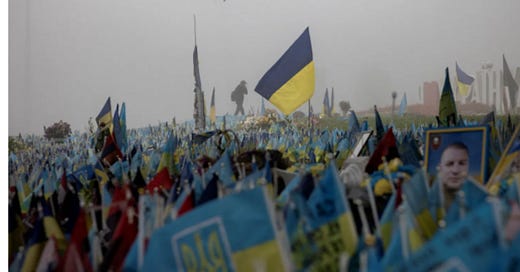






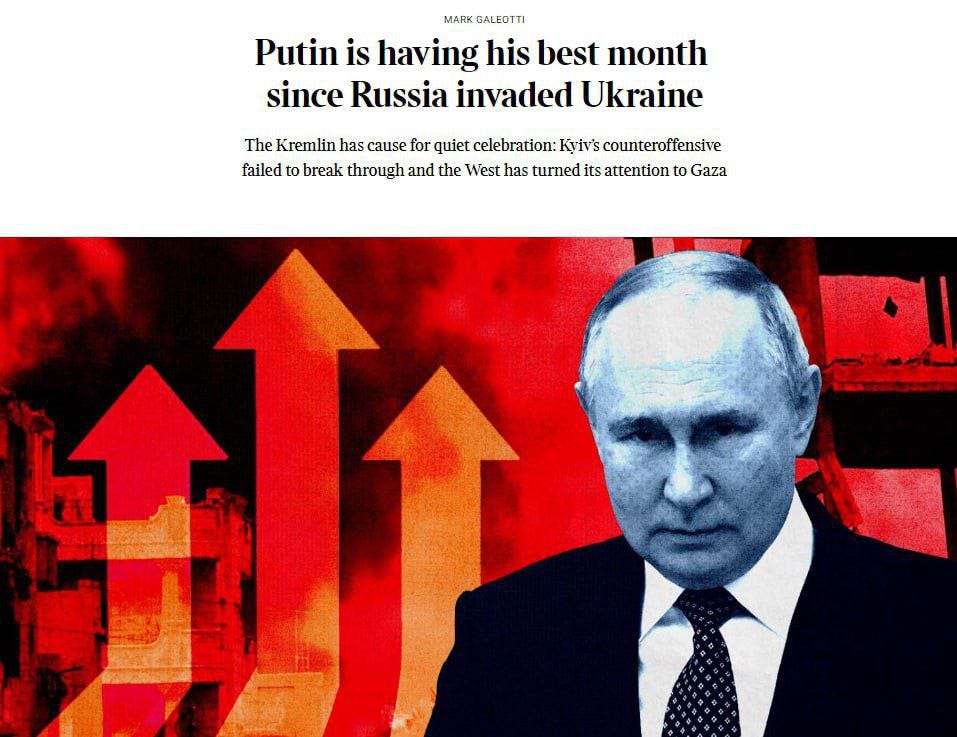


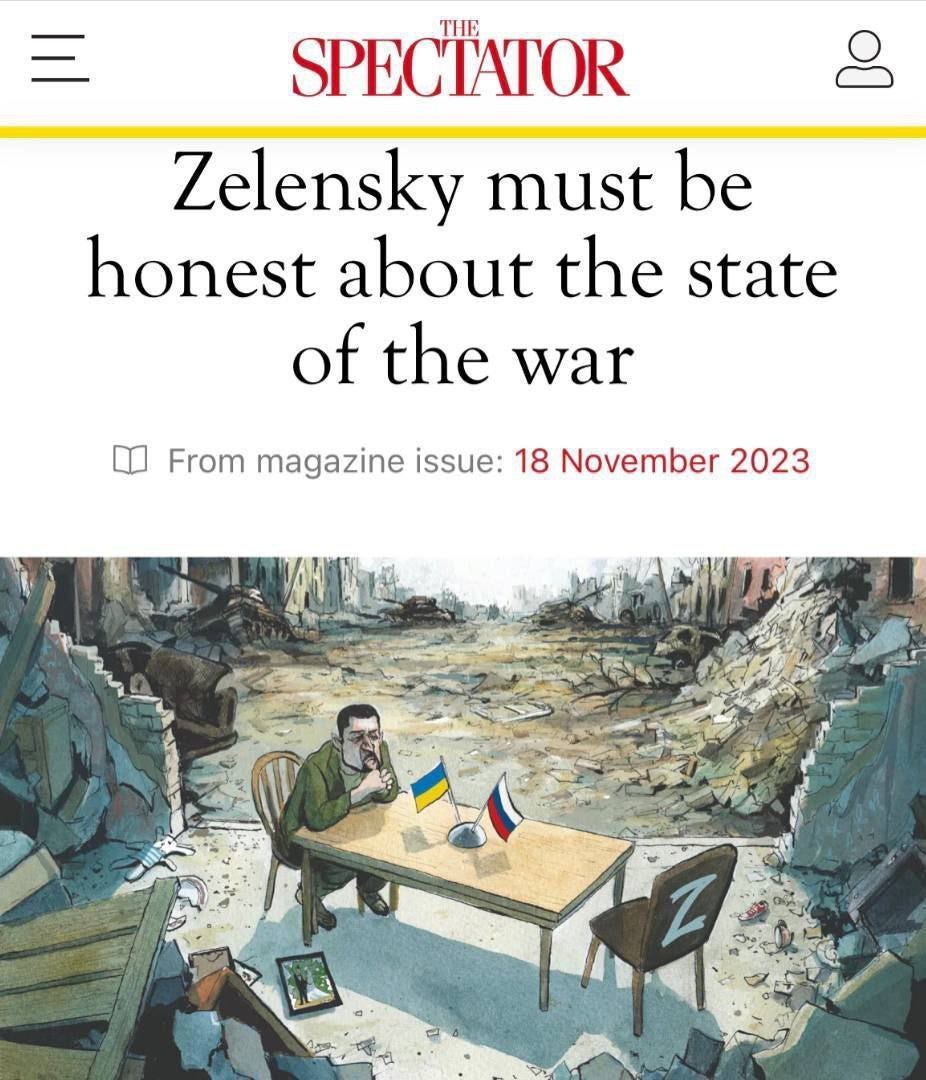
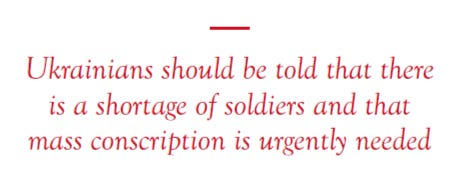

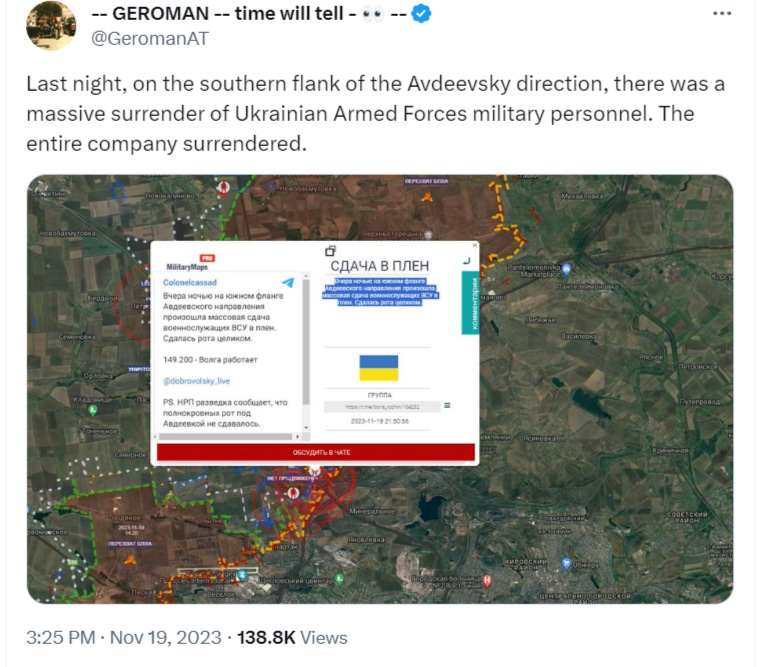
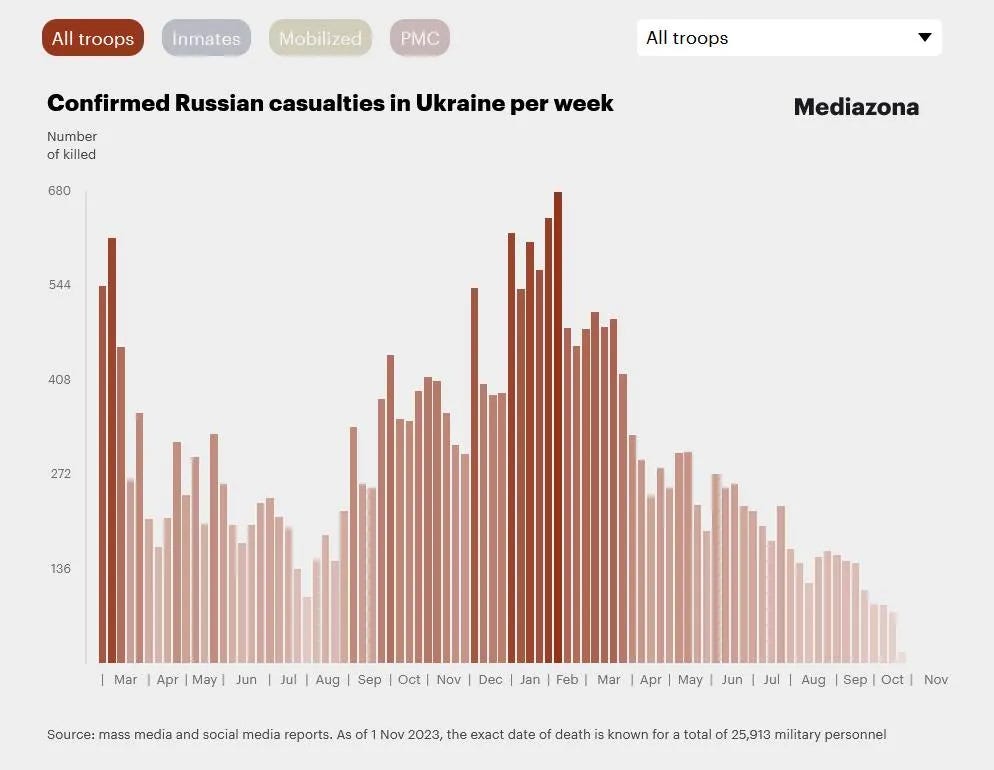

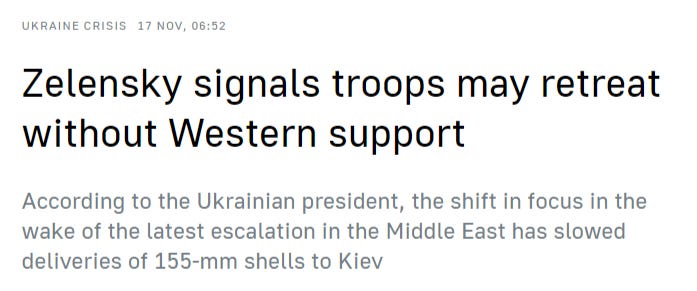





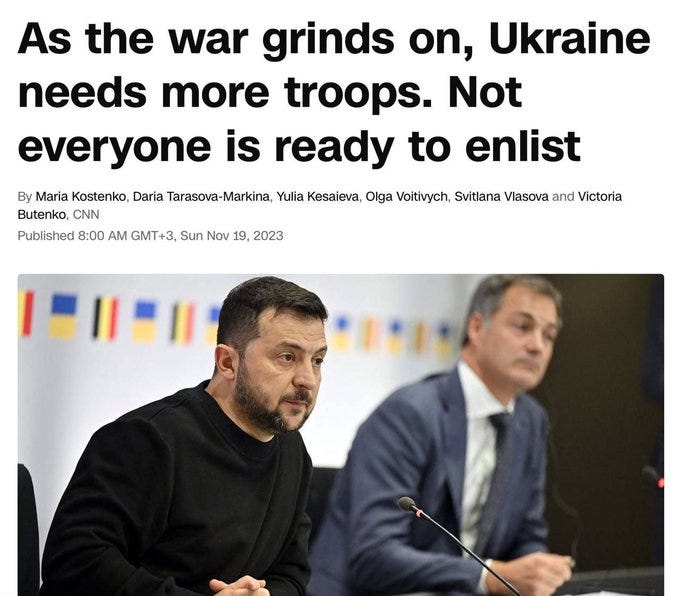


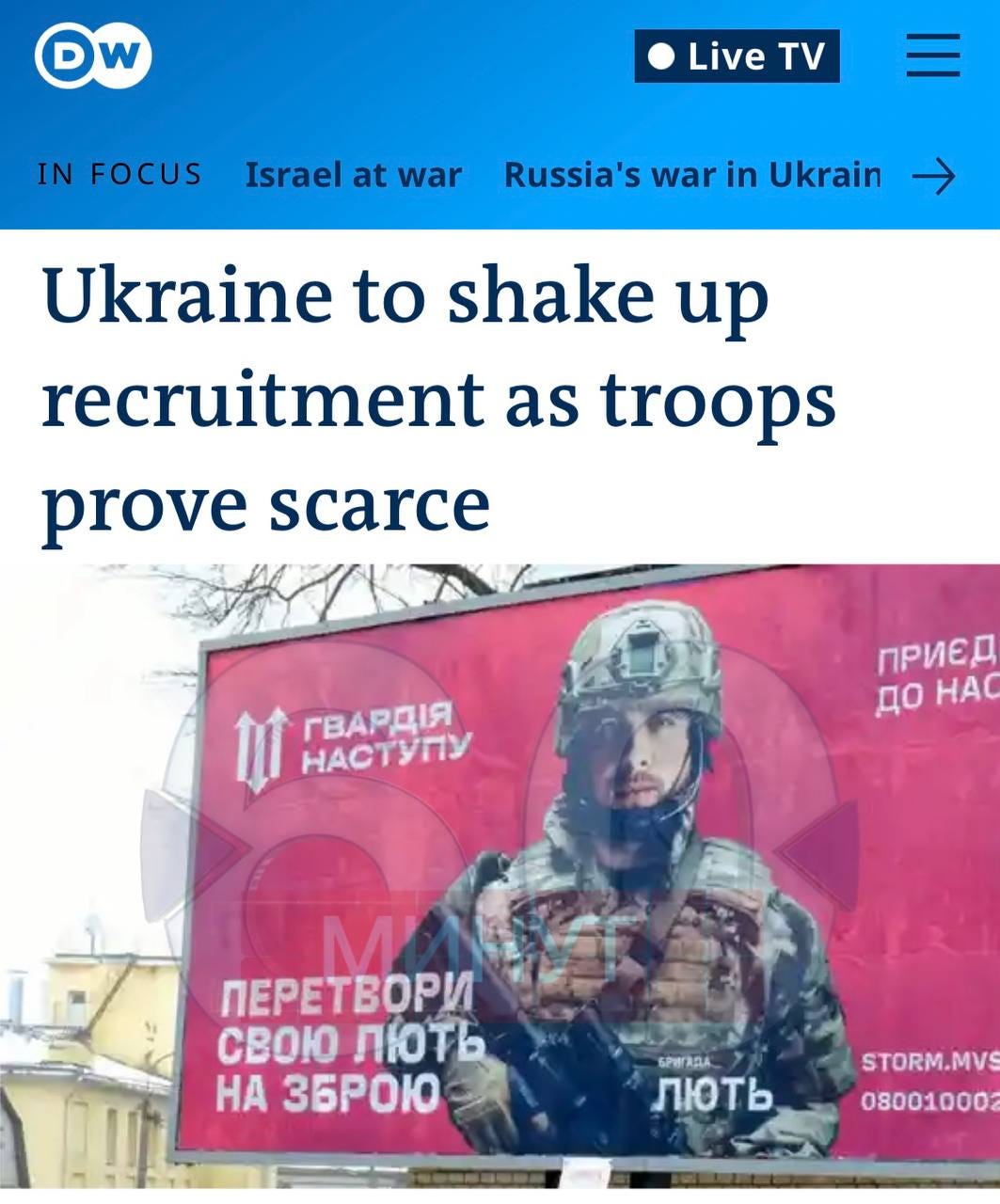
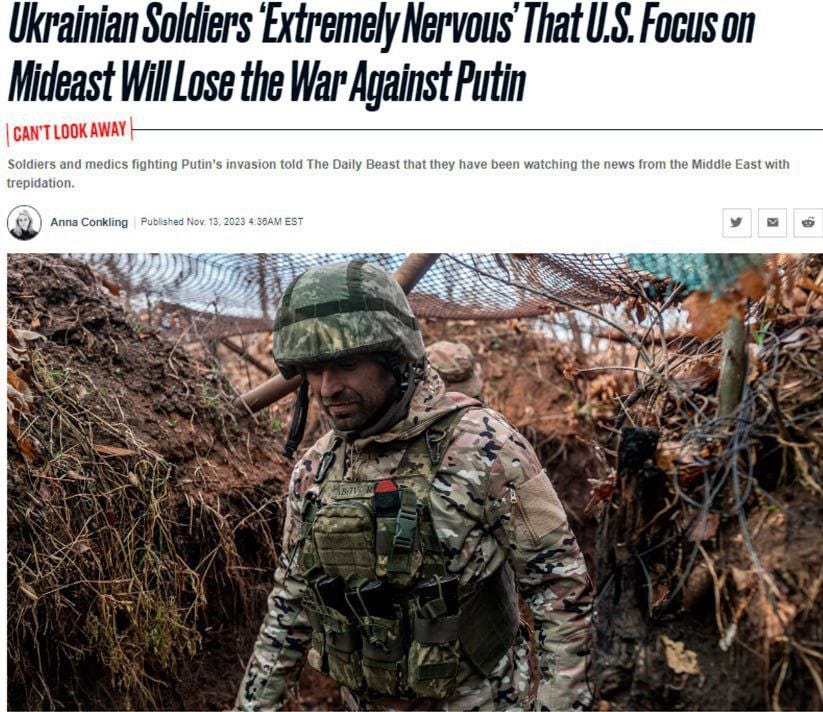
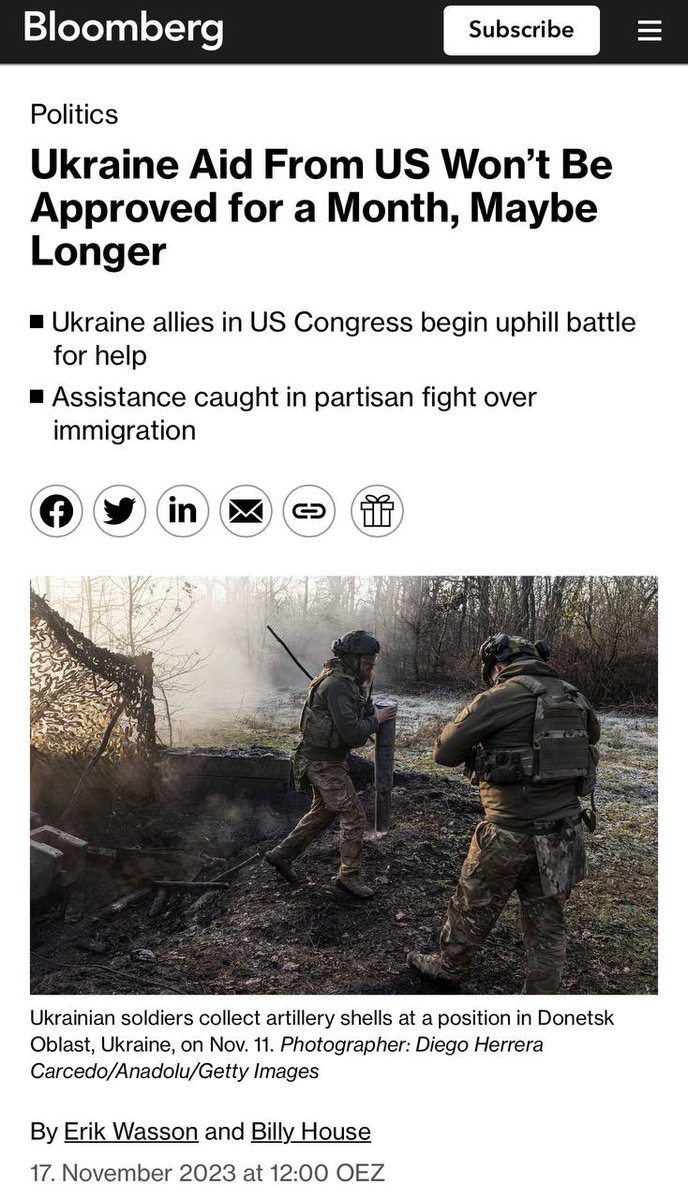

Wow, Simpliticus is relentless I can barely keep up with articles but when I see them I'm there. lol
Crazy to me how many people still believe the Russians are “losing” or “desperate.” When you have a preconceived notion it’s easier to stick with it even when the MSM actually (reluctantly) tells you it ain’t so.